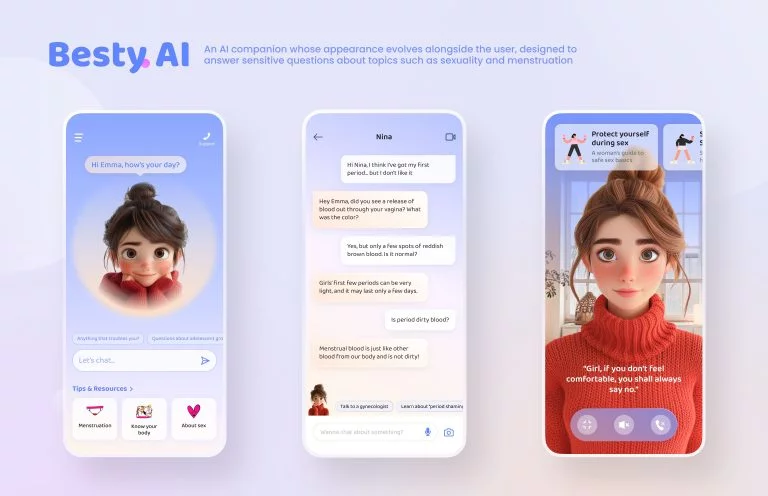Generative AI is rapidly transforming creative industries, from art and fashion to architecture, forcing a rethink of how tradition and innovation can coexist. A remarkable 83% of creative professionals have now integrated AI tools into their workflows, using platforms like Midjourney and Stable Diffusion to jumpstart the design process. At the same time, sustainable design and cultural preservation have become pressing global themes amid climate goals and a push for diversity. Now, these trends are converging. Designers are leveraging artificial intelligence not to replace heritage, but to revitalize it in forward-thinking ways. One notable example is Weiting Gao – an innovative designer whose AI-driven creations are showing how technology can honor tradition and spur sustainable innovation in tandem. Gao, a senior UX designer and recent award-winner on the international stage, is at the forefront of blending cultural heritage with cutting-edge AI. Her work ranges from fashion pieces inspired by ancient Chinese lore to AI-powered apps tackling modern social challenges. In each project, Gao’s philosophy shines through: innovation need not come at the expense of heritage or humanity. As the design community debates AI’s role, Gao offers a compelling case study of balance – demonstrating that the same algorithms often blamed for eroding traditions can, in the right hands, help preserve and reinvent them for a sustainable future.
Cultural couture meets AI. Gao’s award-winning “Chinese Dragon Costume” series was co-created with generative AI and finished by hand, fusing modern minimalism with richly detailed Chinese elements. The project celebrates 2024’s Year of the Dragon by reimagining the mythical creature – symbol of strength and wisdom – through a futuristic design lens. Using AI image generators as a creative partner, Gao rapidly iterated on ornate costume concepts featuring auspicious dragon motifs. She then refined these AI-generated visuals with traditional artistry in Photoshop, ensuring each piece retained an authentic cultural aesthetic. The result is a set of avant-garde garments that pay homage to centuries-old symbolism while appealing to contemporary tastes. The Dragon Costume series exemplifies Gao’s “human-in-the-loop” design ethos: AI handles the heavy lifting of visual experimentation, but human insight guides the narrative. “I treat AI as a collaborator,” Gao explains, noting that algorithms can surface imaginative ideas she might not conceive alone. By curating and tweaking the outputs, she maintains creative control – much like a director working with an assistant. This process not only sparks fresh ideas but is also efficient and potentially sustainable; digital prototyping reduces material waste in early design stages. The impact has resonated in design circles. Gao’s dragon-themed collection earned a prestigious DNA Paris Design Award in 2024 for its bold integration of AI and heritage elements. Judges praised how the costumes marry a clean, modern style with sophisticated traditional Chinese aesthetics, demonstrating that new technology can keep cultural craftsmanship alive in a dazzling new form. At a time when fashion is seeking sustainable paths forward, Gao’s approach suggests that looking back to tradition – with a high-tech assist – might be part of the answer.
While Gao’s foray into AI-assisted couture bridges past and future, her other flagship project tackles a very contemporary problem: the lack of effective, inclusive health education for adolescents. Besty.ai is a conversational AI mobile app concept that Gao co-designed to offer accessible, unbiased sex education and mental health support for young people. The project addresses a critical gap in public health and education. In the United States, 86% of middle schools and 62% of high schools do not provide comprehensive sex education, according to national data. As a result, teens often turn to the internet for answers – risking exposure to misinformation or stigma. Gao’s idea was to create a safe, private space where adolescents (especially girls entering puberty) can get reliable information and ask sensitive questions without fear. AI friend and teacher. The Besty.ai app (concept interface shown above) lets teens interact with a customizable AI “friend” in the form of a chat assistant. Using a large language model trained on vetted health information, Besty.ai responds to questions in a friendly, non-judgmental tone. Gao’s design goes beyond plain Q&A: the AI can speak, text, or even use visuals to explain topics like body changes, mental health, or relationships in age-appropriate ways.
Importantly, the app’s user experience is trauma-informed – meaning it was crafted to be empathetic and culturally sensitive. For instance, users can personalize their AI guide’s name and avatar, making the experience feel more engaging and safe. The interface employs gentle colors and supportive language, reflecting Gao’s emphasis on emotional well-being in design. “Education is not just about facts, it’s about feeling heard and respected,” Gao notes, echoing the U.S. Surgeon General’s calls for tech that bolsters youth mental health. By blending technical innovation with empathy, Besty.ai aims to empower teens with knowledge and confidence – a forward-looking contribution to social sustainability in the digital age. The concept has garnered international acclaim for its responsible AI approach. Besty.ai earned multiple top design honors – including the Red Dot Design Award, MUSE Design Award, and a UX Design Award – for its novel way of combining AI with human-centered ethics. Design experts have lauded it as “a model for addressing social challenges through human-AI collaboration”. In practice, Gao built safeguards into the app: it would cite trusted medical sources to avoid AI “hallucinations,” recognize when to direct users to human professionals, and rigorously protect users’ privacy. These features, still rare in many AI products, illustrate Gao’s methodical, values-driven design process. “Technology should improve lives, not just efficiency,” she says. Besty.ai encapsulates that mantra by tackling a delicate subject – adolescent health – in a way that is scalable via AI yet firmly grounded in safety, inclusivity and cultural respect.
Weiting Gao’s twin pursuits – reviving cultural heritage and advancing ethical tech – might seem disparate, but they stem from a common philosophy. In her view, design must consider long-term human impact, whether that means keeping traditions relevant or making new technology trustworthy. This holistic outlook has distinguished Gao as a rising star in the design world. Her Dragon Costume series and Besty.ai app both clinched global accolades in the past year, showcasing the range of innovation she’s capable of. The former reimagined an ancient icon for modern fashion; the latter proposed a digital solution to a modern-day educational failing. In each case, Gao’s work was celebrated for its blend of creativity and conscience. Trained in both visual design and human-computer interaction, she approaches AI as a tool to augment human creativity, not automate it. Her creative process often involves extensive research – poring over historical art references or consulting educators and psychologists – before ever touching an algorithm. By the time she turns to AI tools, Gao has a clear sense of purpose for what they should achieve. “Intention is key,” she explains. “AI can generate infinite possibilities, but I decide which of those serve the story or the user.” It’s a mindset evident in even her lesser-known projects. In academia, Gao published research on UX frameworks that build user trust in chatbots, reflecting her commitment to transparency in AI design. She also worked on accessible educational tools for visually impaired students, an effort that earned its own accolades and demonstrated her inclusive design ethos.
Across all these endeavors, Gao’s guiding question is the same: How can innovation help people thrive without erasing who they are or where they come from? That question resonates more broadly as industries grapple with rapid technological change. Gao’s success suggests that cultural heritage and advanced AI are not opposing forces but complementary ingredients for sustainable creativity. Her work underscores that preserving tradition can go hand-in-hand with pushing the envelope – a lesson other designers are taking to heart. Indeed, major design schools and conferences now spotlight projects that weave local crafts with digital fabrication, or indigenous knowledge with AI-driven analytics.
Weiting Gao’s journey offers a hopeful blueprint for the future of design and technology. At a time when debates rage over AI’s impact – from intellectual property disputes in art to ethical concerns in tech – Gao provides a living example of AI used responsibly to enrich human-centered creativity. Her projects demonstrate that artificial intelligence can be a powerful ally in sustainable design when guided by thoughtful human intent. By merging technical rigor with empathy, Gao shows it’s possible to innovate and preserve: to create something new that still carries the soul of what came before. In the process, she is helping redefine sustainability to include not just environmental and economic factors, but cultural and social well-being as well. The implications reach far beyond one designer. If AI can help revive endangered crafts, educate underserved communities, or make design processes greener, the benefits accrue to everyone.
Gao’s work hints at an emerging paradigm where technology and tradition evolve together in a virtuous cycle. As industry leaders watch pioneers like her, a consensus is building that the most meaningful innovations are those that uplift, protect, and unite. It’s a sentiment gaining traction in global forums: that the true power of AI lies not in what it can do, but in what it should do for humanity. For designers, that means creating with conscience – using AI as a bridge between generations, between cultures, and between our present challenges and a more sustainable future. In Gao’s studio, the next project is always on the horizon, but the mission remains constant. Whether she’s crafting an AI-inspired garment or coding an educational chatbot, the goal is the same: preserve the best of our heritage, while boldly inventing what comes next. It’s a delicate balance – one that Gao is proving can be achieved, and one that could define the future of design in the age of AI.
Did you like it? 4.4/5 (28)









Wow, Gao’s work is inspiring! How can I learn more about her design process? 🌟
Is it really sustainable to use AI for design? What about the energy consumption of these tools?
Gao’s Chinese Dragon Costume series sounds amazing! Wish I could see it in person. 😍
Thanks for sharing this article! It’s great to see AI being used positively in design.
I’m a bit skeptical about AI in preserving culture. Can it truly capture the nuances of heritage?
Gao’s blending of tradition and technology is a model for the future. Keep it up! 💪